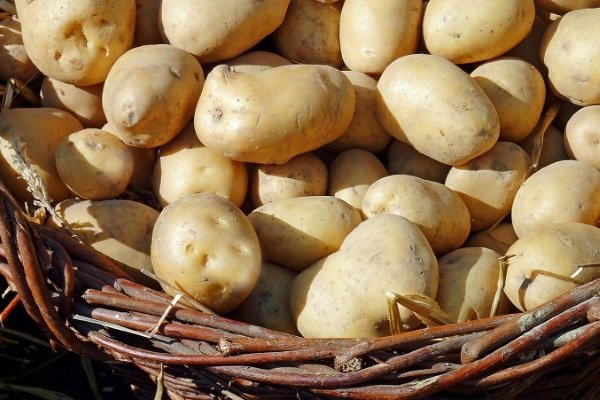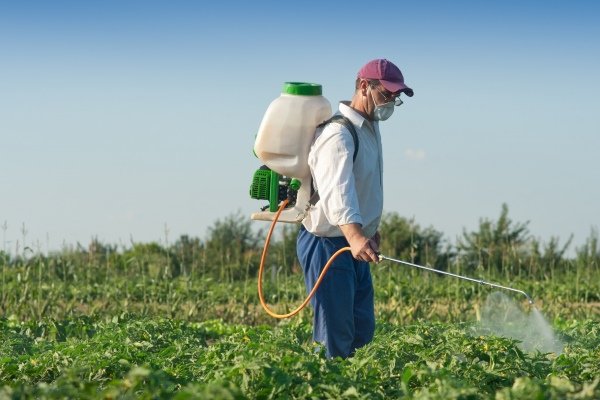Potato growing business
The idea that agricultural business is unprofitable is erroneous. Only those who either don’t understand anything about it, or don’t have patience, logical thinking and are not in the mood to work hard believe in it. There are a lot of areas of this type of activity, among which growing potatoes occupies a special place.
Pros and cons of the potato business
The main advantage is the high demand for such a common vegetable, which no family or person can do without almost every day. In terms of popularity, potatoes are not inferior to any other vegetable. Based on this, profitability b business on its cultivation can reach more than 160%.
Relatively small investment into business, the return of which can be obtained after the first harvest, is another pro factor.
By growing potatoes in small batches, you can save on tax payments, which in this case are not required.
If the soil is sufficiently enriched with organic fertilizers, you can do without fertilizers - this is also a clear plus.
The growing process does not require complex technological knowledge, and this product is in high demand all year round. And if you take care of good storage conditions and choose the moment of sale when potato prices are highest, you can significantly increase your income.
Fast payback business is also a significant advantage.
Technique for potato growing you need a special, oversized one - plows, a mini-tractor, a hiller.
If speak about cons, then there are controversial points here. Many become fixated on the risks associated with weather conditions, which are not always favorable to the harvest or the quality of planting material, and the difficulties of pest control. However, all these problems can be overcome thanks to modern technology. If you use high-quality fertilizers and effective remedies against the Colorado potato beetle and diseases, then no climatic conditions will affect the harvest results.
Of course, one can name a serious disadvantage - this is the low price and cultivation only once a year in the warm season. But this problem is easy to solve if you make the right calculations and organize sales.
The business is seasonal, and in winter the farmer is practically left without work. But to consider this fact as an opportunity to engage in some other type of income-generating activity, it will not be a minus at all.
Features of growing potatoes
The success of a business depends on a professional approach to the implementation of the main production process. In our case, we are talking about the technology of growing potatoes.
There are two options: planting early ripening varieties in greenhouses at such a time that the potatoes are ripe by the beginning of spring, and growing them in the usual way in open ground.
If you are betting on getting a more significant profit, it is worth trying the first method, because early potatoes can be sold at a higher price. In this case, you need to take into account the upcoming costs of installing greenhouses. This option is more suitable for experienced potato growers who know all the intricacies of growing this vegetable.
It is better for a novice entrepreneur to choose the second method. Firstly, there are minimal costs, and secondly, the growing process itself is simple and familiar even to a non-professional.
Growing potatoes is not difficult, but you must follow the technology, which involves going through the following stages:
- Purchasing planting material and preparing it for sowing.
- Soil preparation.
- Planting potatoes.
- Hilling.
- Treatment with special preparations against pests.
- Fertilizing the soil.
- Harvest.
- Preparation of a special storage room.
- Bulkhead, sorting.
- Package.
- Sales
Even with minimal business volumes it is impossible to do without special equipment, which will greatly facilitate soil cultivation, planting, care and harvesting of potatoes. To work on a land area of half a hectare you must have:
- walk-behind tractor or small tractor;
- plow;
- hiller;
- device for digging potatoes.
It is in vain to wait for a good harvest if you do not take care of soil fertility. Experienced farmers use the following types fertilizers:
- ammonium sulfate;
- potassium sulfate;
- potassium superphosphate;
- vermicompost;
- ash.
To achieve fertile soil quality, you will have to incur fertilizer costs of about 20 rubles. per 1 sq. m of land. However, in reality, this is not a cost, but an investment, because fertilized land will return everything a hundredfold in the form of a high yield.

The main stumbling block in this business is Colorado beetle, which for many decades continues to be a clear threat to the potato crop. Unfortunately, we still have to use chemicals. According to average estimates, you will have to incur costs of approximately 3 thousand rubles to purchase funds from this insidious pest. on 35 acres of land.
Requirements for seed material
Any person who has ever grown potatoes for personal needs knows how important it is for planting material to be of high quality. For this there are requirements:
- Do not mix varieties.
- The size of the potatoes should be, if possible, the same.
Seed preparation begins in the fall. To do this, potatoes are sorted, giving preference to the healthiest ones (without suspicious spots, cuts, or other damage). The seed material is subjected to gardening, laid out in the light for 3 weeks (exclude direct sunlight).
For further storage, the seeds are sent to a warehouse with an air temperature of no more than +3 and high humidity (maximum 80%).
During the winter it is worth checking the condition of the seeds several times. If damaged copies appear, they must be immediately removed and discarded.
A month before planting, the seeds are brought out into the light in a place warmer than in the warehouse for germination. If large tubers are found, they are cut into pieces so that at least 3 eyes remain in each of them. Ideally, it is recommended that cutting be done directly on the day of planting. But in both cases, the cut site should be treated with tree resin.
Such detailed actions are carried out on a small scale of business. When grown on an industrial scale, such a process will require automated installations that completely replace manual labor.
Planting potatoes
There are no recommendations for all occasions; sowing dates are dictated by the weather and climatic features of a particular area. You can only be guided by the temperature indicator: when the soil warms up to 12 degrees, you can start planting.
Before planting, the soil is loosened manually with shovels or a tractor in large areas. This process will provide the plant with enough air and retain moisture.
Potatoes are planted in rows, the distance between which is at least 1 m. This contributes to the active development of the bush and ease of harvesting using specialized equipment - milling units. If the distance is smaller, then even with manual processing you can damage the roots, thereby slowing down the growing season.
Landing depth– approximately 8 cm, sowing is covered with an earthen ridge up to 10 cm high.
After 2 weeks, the first treatment against weeds is carried out and hilling(raise the ridge another 10 cm). Light, loose soil is poured on top, which will allow the tubers to form well.
Potatoes need watering. If no rain is expected, it should be done at least 2 times a week. If the air is humid, then water it once every 7 days.
At the very beginning of flowering, preventive treatment is carried out against late blight and the most malicious enemy of potatoes - the Colorado potato beetle. Such treatments are carried out up to 5 times during the season.

When treating potatoes against pests and diseases, you must follow the recommendations indicated on the product packaging.
Setting up a potato business
If we are talking about small volumes of production, when almost all the work is done independently on your own plot of land, you can do without documents. Growing potatoes and then selling them is also a business, but, one might say, an inferior one. This is more like a small part-time job, additional income to the family budget. And even without documents you will have to sell the goods yourself.
If we talk about a significant scale, we will have to go through registration individual agricultural entrepreneurship in the tax office in form A.01,13,21. It is recommended to choose the Unified Agricultural Tax system.
You can learn more about this tax regime from the following article:. It is this form of doing business that is more acceptable for the businessman himself and his partners. This form is simple and convenient for both parties.
Organization of potato sales
Long before the start of cultivating the first potato crop, it is necessary to work out the issue of sales and establish contacts with potential partners with whom long-term cooperation contracts can be concluded.
If large-scale production is planned, it is worth establishing contacts with large retail chains in advance. To do this, you need to prepare your goods so that they have a presentable appearance: washed, neatly packaged in clean, sealed bags.
Selling on the market is also possible; it is especially profitable when prices rise. If you can’t stand behind the counter yourself, you can find a wholesale buyer at the same market. This makes sense, because potatoes are a product that requires special storage conditions, otherwise they will begin to deteriorate (rot, wither, sprout). With wholesale sales, it is possible to sell the goods in a short time and calculate income.
It is worth considering that if you correctly follow the technology requirements, you can grow up to 20 tons of potatoes on 1 hectare. If you have a permanent buyer, you can fully count on a high income.
The financial side of the potato business
In order to turn potato growing into an income-generating business, a systematic approach is needed. For this purpose, a business plan is drawn up. The most important part of it is financial calculations with clearly balanced costs, income and profit.
The following are not excluded expenses:
- Purchase of seed material.
- Purchase of chemicals for treatment against pests and diseases.
- Fertilizers.
- Special equipment (purchase or rent).
- Packaging material.
- Salary in case of hiring workers for large volumes of production.
- Fare.
- Paying taxes.
The amount of costs may vary depending on factors such as the availability of own warehouses, technical equipment for storing and growing crops, or their rental.
Approximate calculations:
- Costs are about 450 thousand rubles.
- 22 tons of potatoes were harvested.
- After sorting, approximately 2.5 tons of waste.
- The average cost of 1 kg of potatoes is 50 rubles.
- If 19.5 (22 – 2.5) tons are sold, the proceeds will be 975 thousand rubles.
- Profit – 525 thousand rubles. (975 – 450).
"Potato" business (video)
The technologies and stages of growing potatoes, as well as the advantages of this type of business, are described in the video presented.
By growing potatoes you can earn more than 100% profit from the invested amount. This means that this type of business is quite profitable. To do this, it is necessary to make efforts, take a responsible approach to issues of soil condition, control pests and diseases, and ensure proper storage and marketing of the grown crop.
